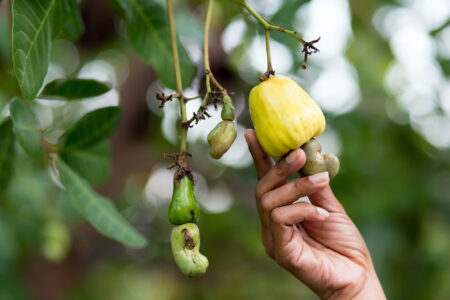- The Monetary Policy Committee (MPC) on Wednesday noted the sustained inflationary pressures, the elevated global risks and their potential impact on the domestic economy.
- CBK sees a scope for a further tightening of the monetary policy in order to anchor inflation expectations.
- Overall inflation in Kenya increased to 9.2 percent in February 2023 from 9.0 percent in January, mainly driven by higher food prices.
The Central Bank of Kenya (CBK) has revised upwards the benchmark rate by 75.0 basis points to 9.50 per cent, in its latest move to try and tame the rising inflation in the country.
This is up from 8.75, signaling a higher cost of borrowing in the market.
Its decision making organ–the Monetary Policy Committee (MPC) on Wednesday noted the sustained inflationary pressures, the elevated global risks and their potential impact on the domestic economy, and concluded that there was scope for a further tightening of the monetary policy in order to anchor inflation expectations.
The MPC met against a backdrop of continued global uncertainties, a weak global growth outlook, easing inflationary pressures, geopolitical tensions, and measures taken by authorities around the world in response to these developments.
“The MPC reviewed the outcomes of its previous decisions and measures implemented to mitigate the adverse economic impact and financial disruptions,” said CBK Governor Dr. Patrick Njoroge.
Overall inflation in Kenya increased to 9.2 percent in February 2023 from 9 percent in January, mainly driven by higher food prices.
Food inflation rose to 13.3 percent in February from 12.8 percent in January, mainly due to increases in the prices of vegetables, attributed to hot and dry weather conditions witnessed in the period.
Additionally, fuel inflation remained elevated at 13.8 percent in February, largely reflecting the scaling down of the fuel subsidy and increases in electricity prices due to higher tariffs.
Overall inflation is expected to remain elevated in the near term, partly reflecting further increases in electricity prices. Nonetheless, the long rains will moderate food inflation in the coming months, CBK notes.
Uncertainties in the global economic outlook have increased, reflecting concerns about financial sector stability in the advanced economies, continuing geopolitical tensions particularly the ongoing war in Ukraine, and the pace of monetary policy tightening in the advanced economies.
Nevertheless, commodity prices in the global markets, particularly of oil and food, have been easing.
Leading indicators point to a strong performance of the Kenyan economy in the first quarter of 2023, reflecting robust activity in the services sector particularly wholesale and retail trade, accommodation and food services, education, and information and communication.
Kenya’s Economic Outlook 2023
The economy is expected to remain resilient in 2023 despite the global uncertainties, supported by continued strong performance of the services sector and expected recovery in agriculture.
Two of the surveys conducted ahead of the MPC meeting—the CEOs Survey and Market Perceptions Survey—revealed tempered optimism about business activity and economic growth prospects for the next 12 months.
Respondents expressed concerns over elevated domestic inflation, the weakening of the Kenya shilling, and high food prices due to prolonged dry weather conditions.
Nonetheless, some respondents remained optimistic due to firm- and sector-specific growth opportunities, the onset of the long rains which was expected to boost agricultural activity and lower food prices in the near term, government measures to strengthen agricultural production, support for businesses through the Hustler Fund, and the resilience of the private sector.
The Survey of the Agriculture Sector conducted in the first half of the month, revealed that prices of some vegetables were expected to increase in the next one month.
Additionally, respondents expected the supply of most non-vegetable food items to either increase or remain unchanged on account of the anticipated long rains season.
Nevertheless, respondents identified high input costs, unpredictable weather conditions, as well as transport costs as the major factors constraining agricultural production.
Goods exports have remained strong, growing by 11.0 percent in the 12 months to February 2023 compared to a similar period in 2022. Receipts from tea and manufactured goods exports increased by 13.4 percent and 27.2 percent, respectively during the period.
The increase in receipts from tea exports reflects improved prices attributed to demand from traditional markets. Additionally, imports grew by 2.1 percent in the 12 months to February 2023 compared to 27.3 percent in a similar period in 2022, with lower imports of infrastructure related equipment due to completed projects.
Oil prices have continued to moderate from the fourth quarter of 2022.
Receipts from services exports increased reflecting sustained improvement in international travel and transport.
Remittances totalled $4,026 million in the 12 months to February 2023, and were 4.9 per cent higher compared to a similar period in 2022.
The current account deficit is projected at 5.4 per cent of GDP in 2023 from the estimate of 4.9 per cent of GDP in 2022.
The CBK foreign exchange reserves, which currently stand at USD6.49 billion (3.62 months of import cover), continue to provide adequate cover and a buffer against any short-term shocks in the foreign exchange market, CBK notes.
Banking sector
The banking sector remains stable and resilient, CBK says, with strong liquidity and capital adequacy ratios.
The ratio of gross non-performing loans (NPLs) to gross loans however stood at 14.0 percent in February 2023, compared to 13.3 percent in December 2022.
Increases in NPLs were noted in the trade, personal and household, manufacturing and building and construction sectors. Banks have nevertheless continued to make adequate provisions for the NPLs.
Growth in private sector credit stood at 11.7 percent in February 2023 compared to 12.7 percent in December 2022, indicating a reduction in lending by commercial banks.
Strong credit growth was however observed in manufacturing (15.2 percent), transport and communication (16.5 percent), trade (11.8 percent), and consumer durables (12.4 percent).
“The number of loan applications and approvals declined, reflecting reduced demand,” CBK says.
The Committee noted the ongoing implementation of the FY2022/23 Government Budget, particularly the performance in tax revenue collection and the approved FY2022/23 Supplementary Budget, which continues to reinforce fiscal consolidation.
“The Committee will closely monitor the impact of the policy measures, as well as developments in the global and domestic economy, and stands ready to take additional measures, as necessary,” Njoroge said.
It will meet again in May 2023, but remains ready to re-convene earlier if necessary, he added.










